Police In Norway Stop Protesters From Entering Iranian Embassy
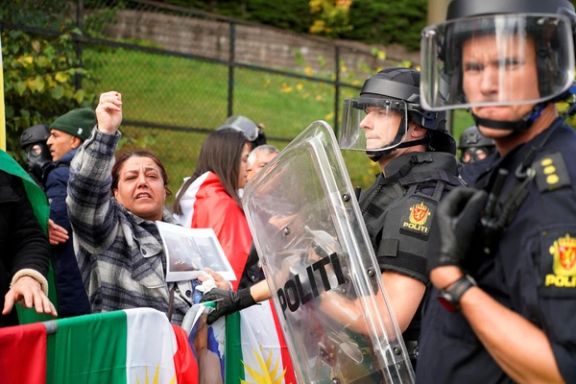
The Norwegian police clashed with protesters who were attempting to enter Iran’s embassy in Oslo on Thursday, amid worldwide rallies against the embassies of the Islamic Republic.

The Norwegian police clashed with protesters who were attempting to enter Iran’s embassy in Oslo on Thursday, amid worldwide rallies against the embassies of the Islamic Republic.
According to the police, at least two people sustained light injuries during the angry demonstration. The police added that “considerable resources" were deployed, and the situation was brought under control.
Also on Thursday, Taliban forces used gunfire to disperse a women's rally in the Afghan capital Kabul in support of the protests in Iran over the death of 22-year-old Mahsa Amini in custody of the hijab police for "inappropriate clothing.”
Chanting the same "Women, life, freedom" mantra used in Iran, dozens of Afghan women protested in front of the Iranian embassy before Taliban forces fired into the air. Women in headscarves carried banners that read, "Iran has risen, now it's our turn!" and "From Kabul to Iran, say no to dictatorship!"
An organizer said that the rally was staged "to show support and solidarity with the people of Iran and the women victims of the Taliban in Afghanistan".
Since the Iranians have risen up against the Islamic Republic following her death, protest rallies are being held regularly inside Iran and abroad.
French police used tear gas and employed anti-riot tactics September 25 to prevent protesters from marching on Tehran's embassy in Paris as several hundred expatriates and human rights activists gathered to protest against Iran’s crackdown on demonstrations.
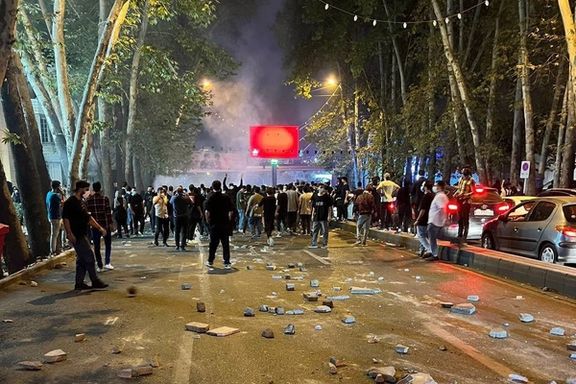
Iranian authorities are claiming that protests are over, threatening activists and celebrities amid calls to strike by various groups including some oil workers.
Officials, who only refer to the protests as “riots” and blame “foreign enemies”, claimed Thursday that ‘rioters’ are back in their homes, and all is quiet now, before protests resumed in the afternoon.
“The recent riots have ended, and security has been established in Tehran which has been secure in the past few nights,” governor of Tehran Province, Mohsen Mansouri said Thursday. “We will take action against celebrities who fanned the fire of the riots,” he said.
Authorities also say they have arrested some of the “leaders of the riots” in various cities and threatened to take action against celebrities many of whom have published posts on social media supporting the protesters’ cause and condemning violence against them.
Reports on social media Wednesday, however, portrayed a different picture. These reports said protesters were staging smaller flash mob style protests in many areas amid the very heavy presence of security forces and plainclothes agents, who had turned out in large numbers on foot and on motorbikes, amid serious disruption of the internet.
Various reports point to a situation of physical and psychological fatigue for security forces, as protesters seem determined to persevere.
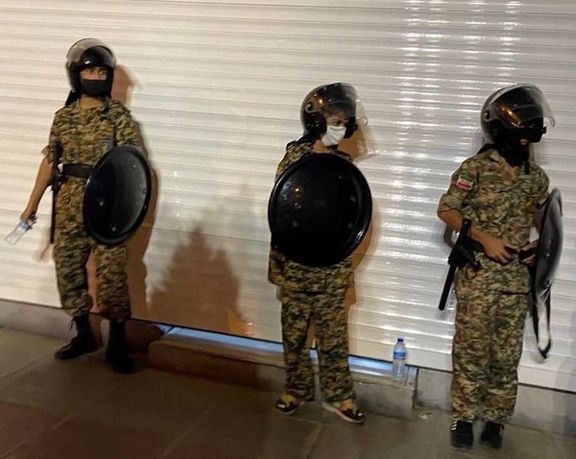
Disruption of the internet has seriously affected uploading of footage from protests on social media platforms all of which are now blocked. Some new footage of protests from previous days is still emerging on social media. Mostafa Faghihi, managing director of Entekhab website, in a tweet Wednesday said he had to try various VPNs for five hours to finally access his Twitter account at four in the morning.
Calls to strike have come from various groups, including teachers and university students. In a video posted on the union’s Twitter Wednesday a truck driver says some drivers have been on strike for three days but have not been able to inform others of their call to strike due to internet disruptions. On Thursday, the coordination council of contracted oil industry workers issued a statement saying they would go on strike if suppression of protesters and arrests continue.
Meanwhile, media have been gagged from reporting the protests altogether. There were no photos and no headlines referring to the protests on the front pages of newspapers, but a few have ventured some mild criticism of the situation. Hardliner newspapers such as the IRGC-linked Javan newspaper, however, beat on the drums of revenge against celebrities for siding with protesters. “The Law’s Priority Is Punishing Rioter Celebrities”, Javan printed across its front-page Thursday.
Authorities have also targeted journalists. Niloufar Hamedi from the reformist Sharq newspaper, who had reported Mahsa’s case from the hospital with a photo of the young woman in coma was arrested several days ago whileElaheh Mohammadi, a journalist with the reformist Ham Mihan newspaper, who had reported the funeral of Mahsa Amini, the young woman whose death in custody sparked the protests, from her hometown Saqqez in Kordestan Province, was also arrested Thursday.
The International Federation of Journalists (IFJ) on Wednesday published a list of 16 journalists arrested in Iran since the protests began.

German Foreign Minister Annalena Baerbock called Thursday on Iranian authorities to immediately end their brutal treatment of protesters and investigate the death of Mahsa Amini.
In a thread of tweets, she said that it has nothing to do with religion or culture if the police beat a woman to death, as it seems to be the case for the young Iranian girl whose death sparked an uprising across Iran.
Condemning the bloody crackdown on popular protests, she said “The clubs and the tear gas are not an expression of power,”
“The violence by the regime in Iran speaks of pure fear,” Baerbock said, noting that nothing scares violent rulers more than a group of women speaking out together.
"We are doing everything within the EU framework to impose sanctions against those responsible for oppressing women in Iran," echoing similar remarks by other European countries about possible sanctions on Iran over the death of the 22-year-old woman and the clampdown on the ensuing protests.
“I summoned the Iranian ambassador and we made it clear in that the Iranian authorities must stop their brutal actions immediately. Not only the death of Jina (Mahsa Amini), but also that of many demonstrators, needs to be clarified,” she said
Iran's state-run newspaper Tehran Times claimed Thursday that four European countries, including Germany and Netherlands, and an Asian state have been involved in inciting "riots" in Iran. It said the German embassy in Tehran has served as a coordinating center for other EU embassies “to fan the flames of the protests.”
The German embassy encouraged members of Mahsa’s family to speak out against the police, it alleged, adding that the embassy promised them that Germany will give them German citizenship, in case they were prosecuted by the Iranian authorities.

New audio footage released by a former IRGC commander has provided further evidence that Mahsa Amini, the young girl whose death sparked an uprising in Iran, died due to blows to her head.
In the audio tape published on Youtube on Thursday, Mohammad-Bagher Bakhtiar, a former commander of Revolutionary Guard during Iran's 1980-88 war with Iraq, quoted informed sources at the Forensic Medicine Organization as saying that Amini died because of a "blow to her skull".
According to Bakhtiar's "reliable sources," after she was transferred to Tehran's Kasra Hospital and examined, evidence of internal bleeding and damage to her spleen was found. The spleen was removed to stabilize her condition but her skull injuries caused her to fall into a coma and die.
He added that if the government had "common sense," and accepted responsibility for this incident, "maybe they would have suffered less consequences".
The former IRGC commander also accused the Iranian government of hypocrisy and called on the young people of Iran to unite against the regime.
Iran International had earlier published Mahsa's skull CT scan which showed bone fracture, hemorrhage and brain edema.
An eyewitness told Iran International last week that Mahsa had told her in a detention room that an officer had hit her on the head.
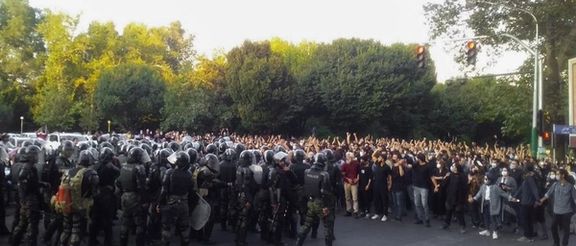
Iran International TV reported Thursday that 20 journalists have been arrested in Iran as the government disrupted internet services amid popular protests.
The figure was sourced by Iran International to the lawyer of Efaheh Mohammadi, who said his client had been arrested after covering for the Ham-Mihan newspaper the funeral of Mahsa Amini, who died 16 September after being detained by morality police.
Mohammadi was reported in December 2021 by the Mujahideen-e Khalq, the Albania-based opposition group, to be banned from journalism for a year after Revolutionary Guards’ (IRGC) Intelligence complained over her reporting of “women’s issues” and the downing of a Ukrainian passenger plane near Tehran January 2020 during tensions with the United States.
The International Federation of Journalists, the Brussels-based association, claimed Monday 17 journalists had been arrested including two from the reformist newspaper Shargh and three from Mukrian, a Kurdish news agency, including editor Masoud Kurdpur.
Novelist J.K. Rowling, widely known for her Harry Potter books, tweeted Wednesday on the arrest of Niloufar Hamedi, arguing the Iran should be “held accountable for its human rights violations.” Rowling referred to a London Times article published Tuesday with a Dubai dateline that said Hamedi was held in solitary confinement after “breaking the news that Amini, 22, was in hospital following her arrest,” and publishing “a photo of her parents hugging each other in the hospital corridor, which spread rapidly online.”
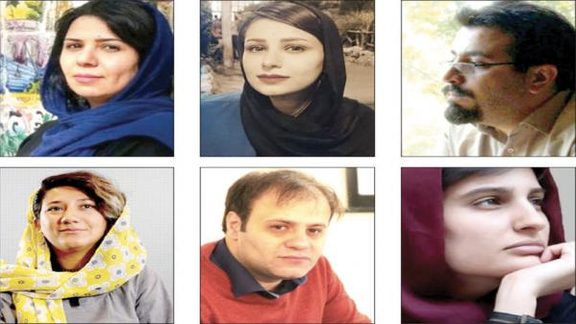
Social media: ‘venue for the enemies’
Lotfollah Siakhali, a principlist member of parliament who is a proponent of internet restrictions, told reporters Wednesday that social media was “the biggest venue for the enemies to further their conspiracies” and therefore “restrictions [on Internet access] will continue” as long as unrest went on.
The IRGC commander in Tehran said on Wednesday that 185 members of the Basij militia, which has both full-time and part-time members and is IRGC-affiliated, had been injured during clashes, some critically. Basij militia is widely used in attacking protesters.
But Elon Musk’s headline-grabbing offer September 23 to extend the Starlink satellite Internet link to Iran has floundered. Musk’s intervention was followed by a US announcement lifting the threat of sanctions against anyone providing internet services or equipment to Iran. Musk reportedly told Washington-based Carnegie Endowment fellow Karim Sadjadpour Sunday: “Starlink is now activated in Iran. It requires the use of terminals in-country, which I suspect the government will not support, but if anyone can get terminals into Iran, they will work.”
‘Watch out for Gollum’
Middle East Eye reminded readers Tuesday that Musk once tweeted that “Iran’s nuclear weapons facility is apparently called ‘Frodo’. Watch out for Gollum!”?
Iranian leaders and officials resorted to their playbook of accusing the US and foreign-based media operations of fomenting violence, largely though the conduit of social media. In a televised interview on the official IRIB television Wednesday President Ebrahim Raisi criticized “fabricated claims on killing people” circulated by “the enemy.”
The Iranian government rarely issues permits for protests, except to its own supporters who do not need any formal permission. Six reformist parties, that do not oppose the Islamic Republic, submitted a request days ago and have not received any response.
Heath minister Bahram Einollahi said last week that 72 ambulances had been destroyed. Activists based abroad, cited in the UK Observer newspaper, claimed this happened because ambulances were used to move police forces.

Iran’s Foreign Ministry has summoned the French chargé d'affaires in Tehran over France’s stance toward protests in Iran sparked by the death of a hijab victim.
"In response to the interventionist statement of the French Ministry of Foreign Affairs, the participation of three French officials in protests in Paris and the ridiculous action of Charlie Hebdo magazine, the chargé d'affaires of the French Embassy in Tehran was summoned to the Ministry of Foreign Affairs," state-run media reported on Thursday.
The head of the Second Bureau of West Europe at Iran’s Foreign Ministry told the French diplomat that Iran strongly condemns the intervention of the French Foreign Ministry and some French officials in Iran’s domestic affairs.
He also blamed the French officials of playing “a dual role”, by hosting groups that have been directly involved in unrest across Iran over the past years on the one hand, and by condemning the Iranian police for clashing with the same “rioters” on the other hand.
On September 26, France reiterates its condemnation in the strongest possible terms of the Iranian security apparatus’ violent repression of the protests that have followed the shocking death of Mahsa Amini, the 22-year-old Kurdish girl who died due to several blows on her head in the hands of hijab police.
“France condemns all forms of violence, the arbitrary arrest and detention of protestors, as well as the gross violations of women’s rights and the freedom of expression via the blocking of news sites and social media. France also condemns the arbitrary arrest of journalists in the course of their work,” read a statement.
Spain summoned the Iranian ambassador Wednesday to convey Madrid’s “absolute condemnation” of the Islamic Republic's violence against peaceful protestors.